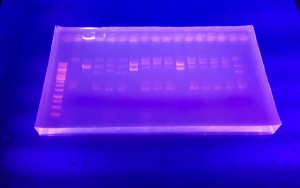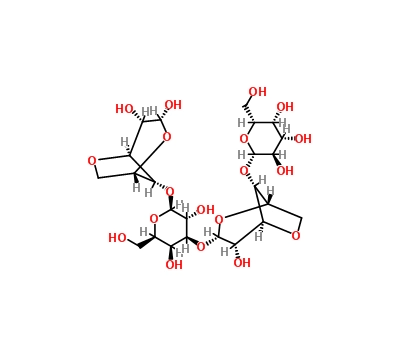Agarose, a gel-like substance derived from seaweed, has become an indispensable tool in molecular biology laboratories around the world. But what exactly is agarose, and why is it so widely used? We will explore the basics of agarose, including its composition, key applications, and significance.
What is Agarose?
Agarose is a polysaccharide polymer that forms a porous gel when dissolved in boiling water or buffer solutions. The gels have variable pore sizes depending on the agarose concentration, allowing the separation of biological molecules by size.

What is an Agarose Gel?
The most common application of agarose is as a matrix for gel electrophoresis, used to separate charged molecules like DNA, RNA, and proteins by applying an electric field across the gel. The pores created in the gel act like a molecular sieve – smaller molecules can pass through easily and travel farther towards the oppositely charged electrode, while larger ones have more difficulty moving through the matrix. This allows precise separation by size.
How is Agarose Gel Concentration and Optimization Utilized?
Agarose gels used for electrophoresis are typically 0.2% to 3% agarose. The concentration can be optimized to the fragment sizes being analyzed – lower percentages for resolving larger fragments and higher percentages for better separation of smaller fragments. DNA and RNA molecular weight marker ladders containing known fragment sizes are run alongside samples to allow approximate size determination.
What are the Properties of Agarose Gel?
Agarose gels are optically transparent, making it easy to visualize separated biological molecules using staining techniques like ethidium bromide. They can also be manipulated without damage, enabling the recovery of separated biomolecules. The lack of protein-binding and general inertness provides an ideal medium for sensitive analytical separation and characterization of nucleic acids and proteins.
What is Agarose Made Of?
Agarose consists of repeating agarose subunits made up of galactose sugars. The long chains of agarose molecules associate through hydrogen bonding to form helical structures which assemble into supercoiled bundles, creating pores when the gel sets. Altering the concentration of agarose changes the pore size – using higher percentages results in smaller pores to better separate tiny molecules.
Where Does Agarose Come From?
Agarose is derived from agar, a jelly-like substance naturally present in the cell walls of some species of red algae such as Gelidium and Gracilaria. It is extracted and purified from agar through a series of steps involving solvent filtration, precipitation, and ion exchange chromatography. This produces a neutral polysaccharide fraction consisting of agarose along with small amounts of agaropectin.
How is Agarose Made?
Commercial production of agarose typically starts by washing and grinding red seaweed biomass, followed by several extraction steps with hot water or alkaline solution. The extract is then purified to remove salts, proteins, and other compounds. Controlled hydrolysis converts the purified agar into an agarose fraction, which undergoes further advanced purification producing agarose powders of research or analytical grade.
What is Agarose Powder?
Agarose powders consist of finely ground particles that dissolve easily in boiling aqueous solutions. They are available in different electroendosmosis (EEO) grades depending on the intended application. Low EEO agarose powder is commonly used for the separation of biomolecules like nucleic acids and proteins. Additives are often incorporated in precast agarose gels.
What Factors Affect Agarose Gel Properties?
The composition and concentration of an agarose gel impact its physical properties including pore size, gel strength, and separation performance. Agarose concentration is the primary factor determining pore size, while the introduction of substituents like methyl or hydroxyethyl groups influences gel stability. Additives such as sugars impact viscosity and conductivity. All these interdependent factors need to be balanced for optimal resolution.
Why is Agarose Used for Electrophoresis?
Agarose gels optimize the separation efficiency of biological molecules while allowing easy preparation, loading, and handling. The non-toxic and non-denaturing medium maintains sample integrity. Flexibility in manipulating agarose concentration gives a good balance between separation speed and resolution across a wide size range. The absence of electroosmotic flow and lack of surface adsorption are added advantages over other matrices.
Recovery of intact macromolecules from agarose gels enables many downstream applications. Radical-free purification protects delicate molecules, while transparency allows simple gel documentation. These beneficial characteristics explain the enduring prominent use of agarose gel electrophoresis.
What is Agarose Used For?
In addition to the ubiquitous agarose gel electrophoresis, agarose has many uses in biotechnology and medical applications:
- Agarose beads provide solid support matrices for the purification or immobilization of enzymes, antibodies, and other proteins.
- Agarose hydrogels can mimic natural tissue and allow cell growth, making them useful scaffolds in tissue engineering.
- Porous agarose microparticles have been employed in drug delivery systems to provide sustained release.
- Agarose can separate proteins by various chromatography techniques based on size or charge differences.
The intrinsic low toxicity, thermal stability, and gentle handling conditions of agarose gels have greatly enabled sensitive analytical separation, characterization, and manipulation of vital biomolecules. Technological advances continue to reveal novel applications that rely on the unique chemical and physical properties of this seaweed extract.
What are the Key Benefits of Using Agarose?
Here are some benefits of using Agarose in the Laboratories:
- Biocompatible and intrinsically non-toxic, enabling safe handling and analysis of delicate biological molecules
- Thermally stable gels simplify preparation procedures and withstand electrophoresis conditions without distortion
- A gentle, radicle-free environment preserves the integrity of purified proteins and nucleic acids
- The absence of electroendosmosis assists uniform molecule migration unimpeded by gel surface effects
- Lack of protein binding allows distortion-free separation and visualization
- Adjustable pore sizes through modulating agarose concentration provide optimal resolution across a wide molecular weight range
- High gel porosity and optical transparency aid straightforward sample recovery and documentation
- Molded gel formats are easily manipulated and compatible with separation instrumentations
- Low electroosmotic flow minimizes band broadening for sharp resolution
- Functionalizability through chemical modifications expands separation selectivity and detection sensitivity
- Shear-thinning and thermal reversibility assist moulding into various forms like microbeads and hydrogels for novel applications
Conclusion
From DNA fingerprinting in forensics to precision medicine analytics, agarose has become ubiquitous in modern molecular biology and biotechnology. The versatile polysaccharide medium empowers high-resolution electrophoretic analysis of nucleic acids and proteins. Looking ahead, robust and accessible agarose gel systems as well as emerging nanostructured configurations will continue fueling key discoveries by allowing in-depth study of the fundamental biomolecules underlying life’s intricacies.
